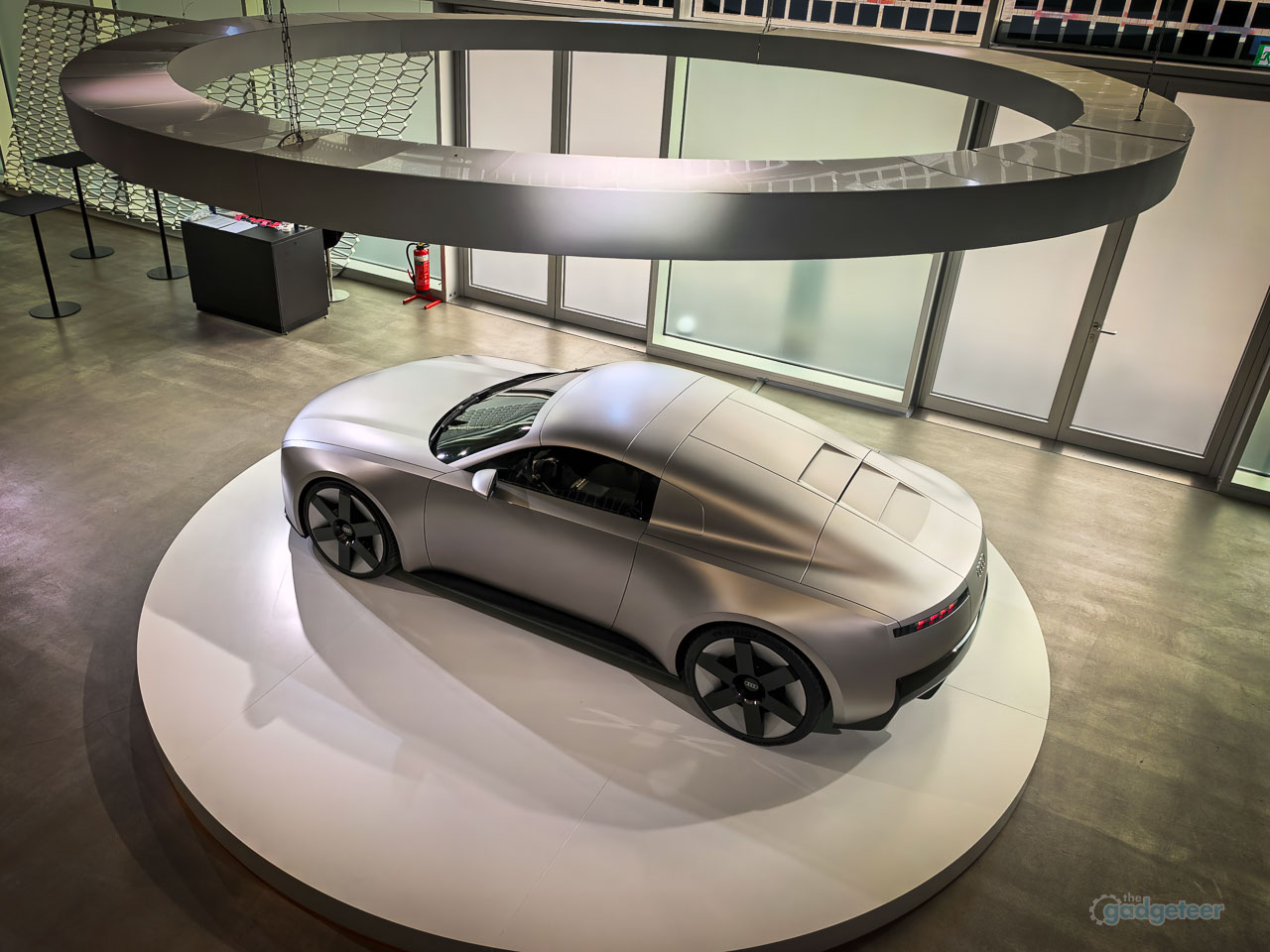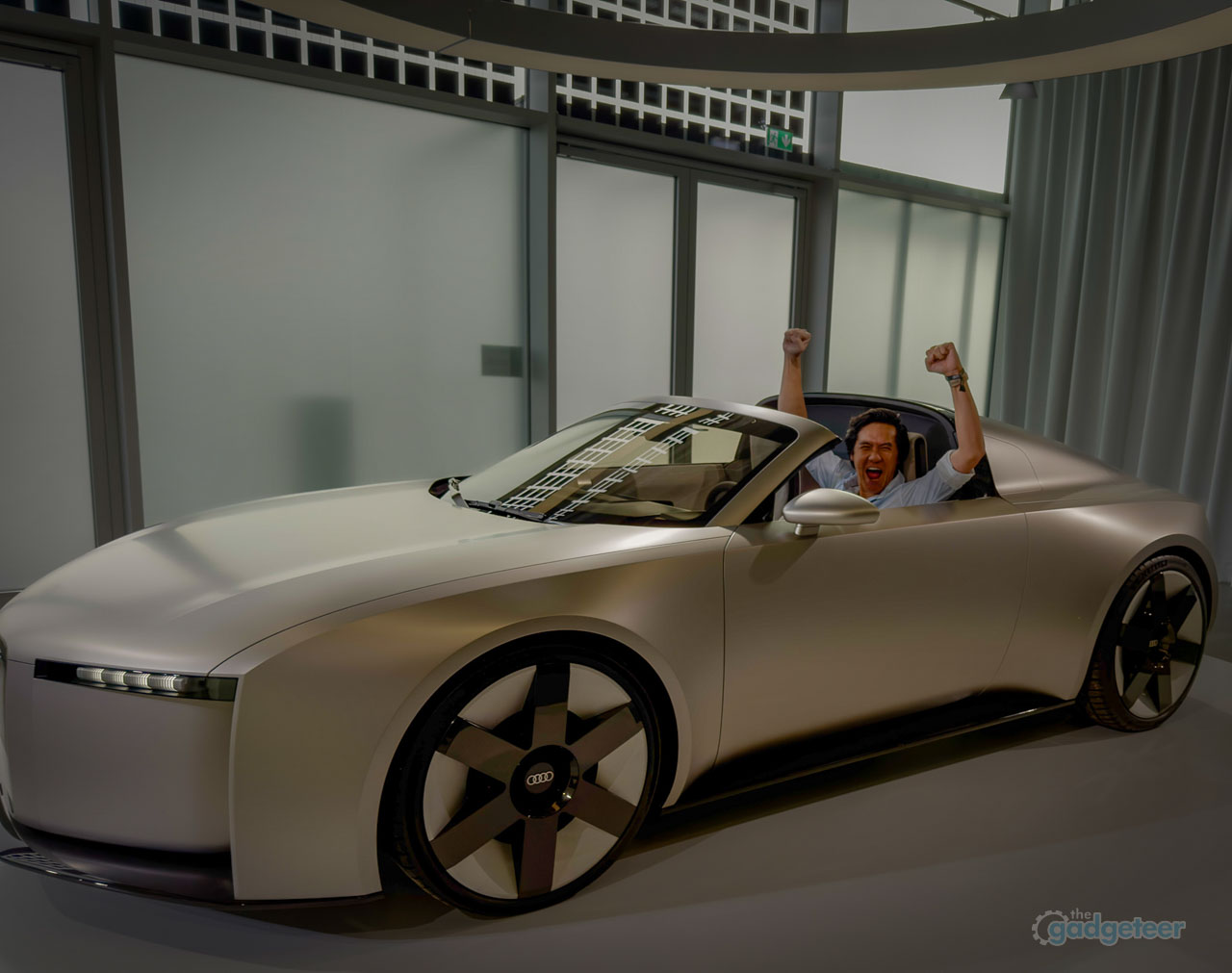
Sometimes you just gotta yell out, HELL YEAH! And that’s exactly how I’m feeling right now. Today was nothing short of epic. I was in Audi’s F1 Mission Control room, even sat in the amazingly comfortable Recaro chair that the race engineers use. While I was mainly there for the Concept R26 reveal, I also got hands-on time with the Concept C roadster and had an insightful interview with Massimo Frascella, Audi’s Chief Creative Officer.
The Facility Tour: Inside Audi Formula Racing
Christian, who heads up operational areas at Audi Formula Racing (AFR), led our tour through the facility that opened in 2014. He’s been in Formula 1 since 2015 and commutes almost every week from the UK to the facility. The facility is staffed with an international team preparing for Audi’s F1 entry.

Walking into the Brand Experience Center in Munich, you immediately understand why Audi waited until now to enter F1. They’ve been involved in nearly every top-level racing series over the past 25 years except Formula 1. The trophy wall showcasing their Le Mans victories tells that story clearly. Christian explained how their experience across gasoline and diesel technologies built the competencies that prepared them for F1.
But here’s the reality check: They have only 115 days (about 3.5 months) before their first race. That timeline means not everything could be shown during the tour, but what we did see was impressive.
Mission Control: Where the Magic Happens
The highlight of the facility tour was stepping into Audi’s F1 Mission Control room. This isn’t a showroom mockup for journalists. This is the actual operational center where engineers will monitor live race data, make strategy calls, and communicate with the pit wall during races.
The Recaro chairs are genuinely comfortable, which matters when engineers are sitting through 2-hour race sessions analyzing telemetry data in real-time. Each workstation features multiple monitors displaying live timing, car telemetry, weather data, and competitor analysis. The setup rivals what you’d see in a NASA control room or a high-end gaming battlestation, but the stakes here are considerably higher.
The R26 Concept: Radical Minimalism Meets F1
The R26 Concept sat under reveal lighting, and the first thing that strikes you is how clean it looks compared to every other F1 car. Where competitors plaster every surface with sponsor logos and complex graphics, Audi went the opposite direction with radical minimalism.

The Tech Details That Matter
The Color System: Audi developed an entirely new three-color palette for F1. Titanium (a warm metallic that shifts from almost white in bright sun to deeper gray in shadow), carbon black (actual exposed carbon fiber with visible weave pattern), and Audi red (created specifically for F1, replacing their traditional silver rings).
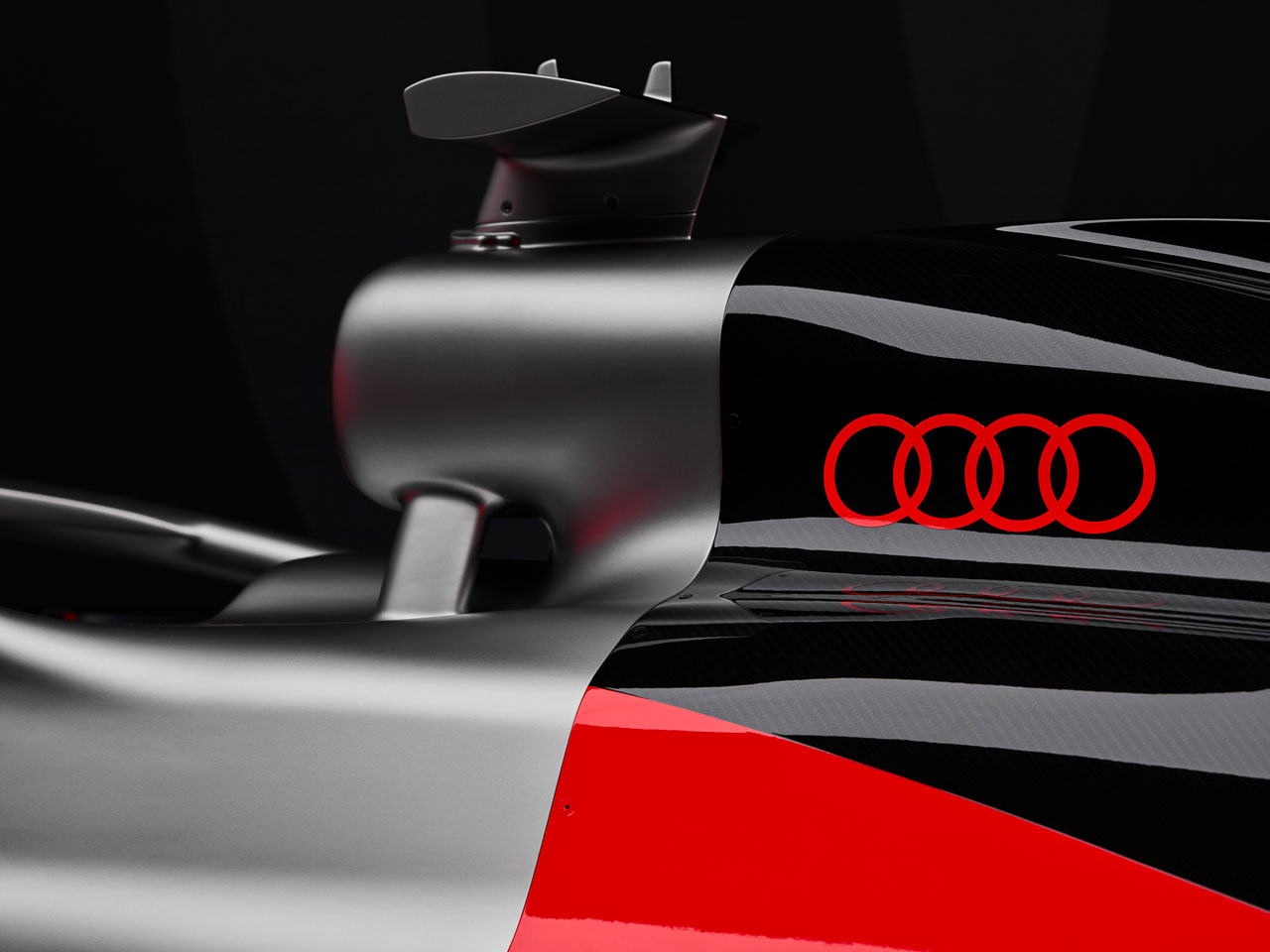
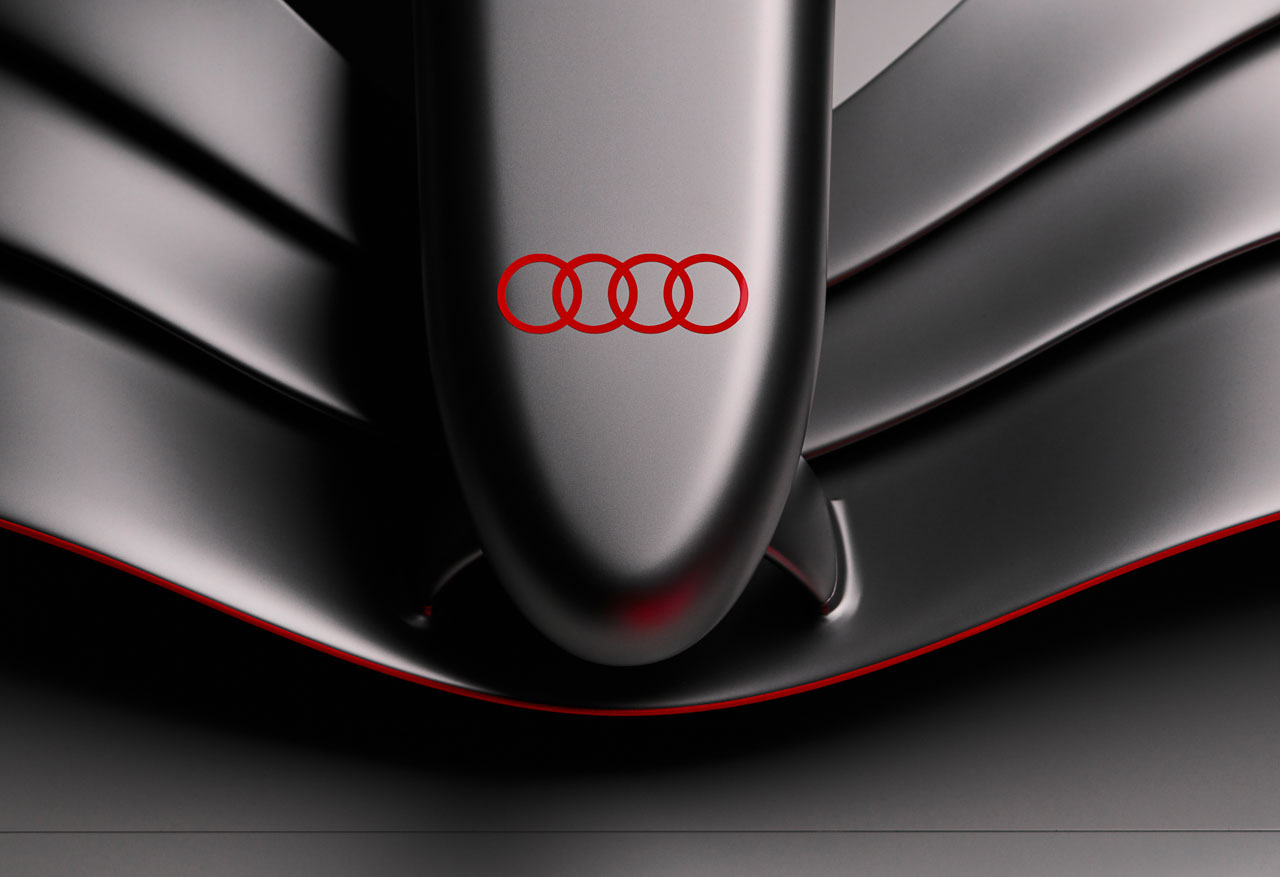
- 2026 Regulations Impact: The new regulations allow for smaller cars (3.40m wheelbase vs. 3.60m), narrower track width (190cm vs. 200cm), and lighter weight (768kg vs. 798kg). But here’s the big tech story: 50% electric power. The MGU-K delivers 350kW, roughly matching the combustion engine’s output. This triples the electrical power from current regulations and fundamentally changes the car’s architecture.
- Material Expression: The titanium surfaces use a semi-gloss finish that balances reflection with depth. The carbon fiber is clear-coated to reveal the woven structure while maintaining aerodynamic smoothness. Standing close to the car, you can see individual carbon weave patterns under the reveal lighting.
- Geometric Cuts: The most striking design element is the geometric surface treatment. Instead of applying graphics to the car’s complex 3D forms, Audi created precise cuts that follow structural geometry. Each cut aligns with a structural stress point, airflow path, or regulatory panel division. The design team worked directly with engineers to map every cut to the car’s invisible architecture.
Hands-On with the Concept C
Between the R26 reveal and my interview with Massimo Frascella, I got time with the Concept C, Audi’s all-electric two-seat roadster previewing a 2027 production model. This isn’t a static showcar. Journalists have been driving street-legal prototypes on public roads in Spain.

The Concept C introduces what Audi calls “athletic minimalism.” The vertical frame design replaces traditional horizontal grilles, and the electric powertrain eliminates the need for large cooling apertures. The proportions feel more R8 successor than TT replacement, with a low-slung profile emphasizing width without appearing aggressive.
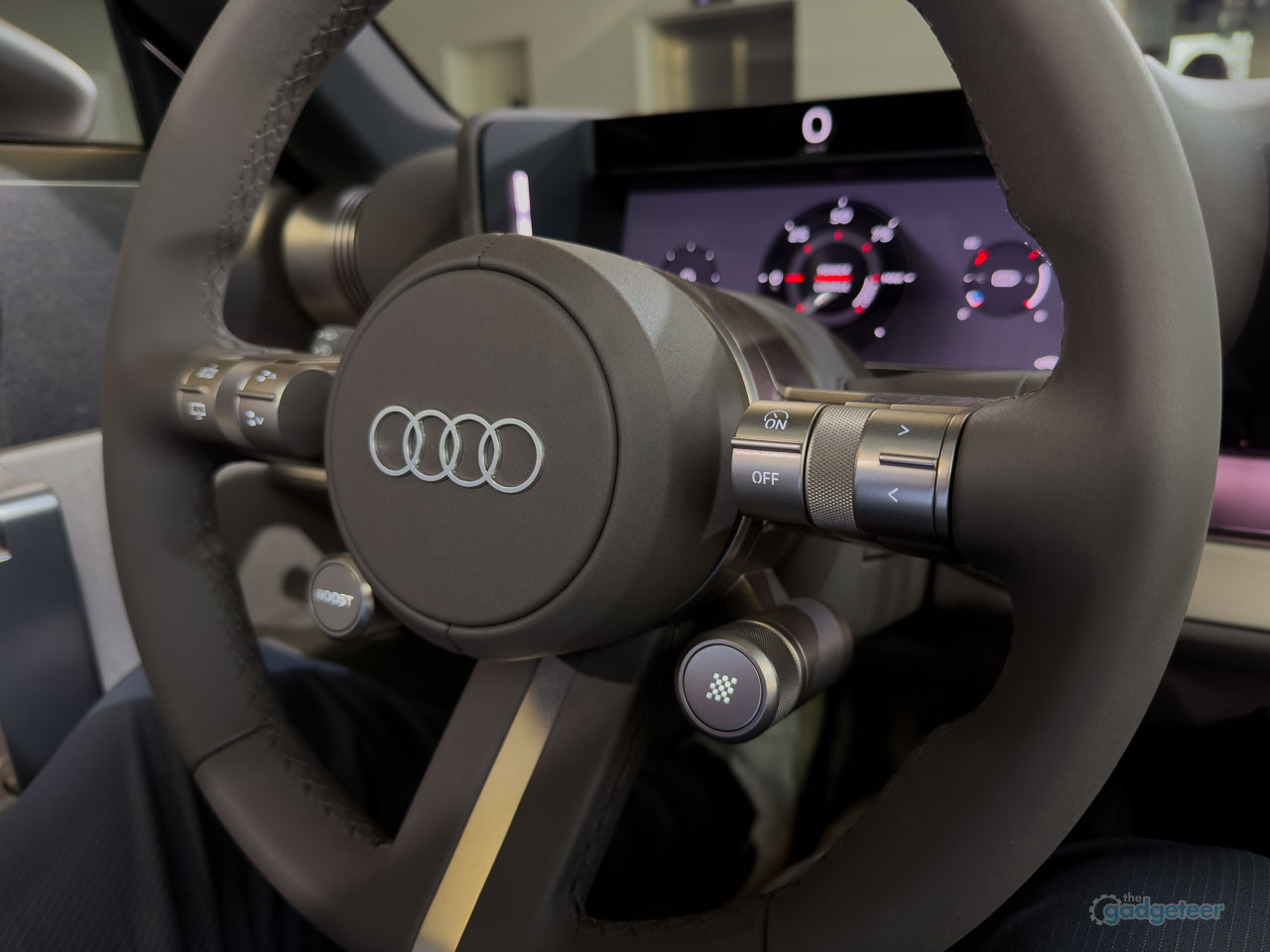
- The Interior Tech: The 10.4-inch foldable center display works seamlessly with haptic controls on the steering wheel and center console. Physical controls are manufactured from anodized aluminum with the unmistakable “Audi click” feedback. The steering wheel features sophisticated haptic elements and real metal Audi rings crafted with technical precision.
- The Revolutionary Hardtop: The electrically retractable hardtop system uses a two-element design that maintains the car’s silhouette whether raised or lowered. When lowered, the roof elements disappear completely without visible storage compartments or exposed mechanisms. It’s the kind of engineering elegance that makes tech enthusiasts appreciate good design.
Interview with Massimo Frascella
Massimo Frascella became Audi’s Chief Creative Officer (Head of Design) on June 1, 2024, succeeding Marc Lichte. He’s an Italian designer who started at the legendary Stile Bertone studio, worked at Ford, Kia, and Jaguar Land Rover before joining Audi. At JLR, he led design for both Jaguar and Land Rover brands, shaping vehicles like the modern Defender and latest Range Rover.
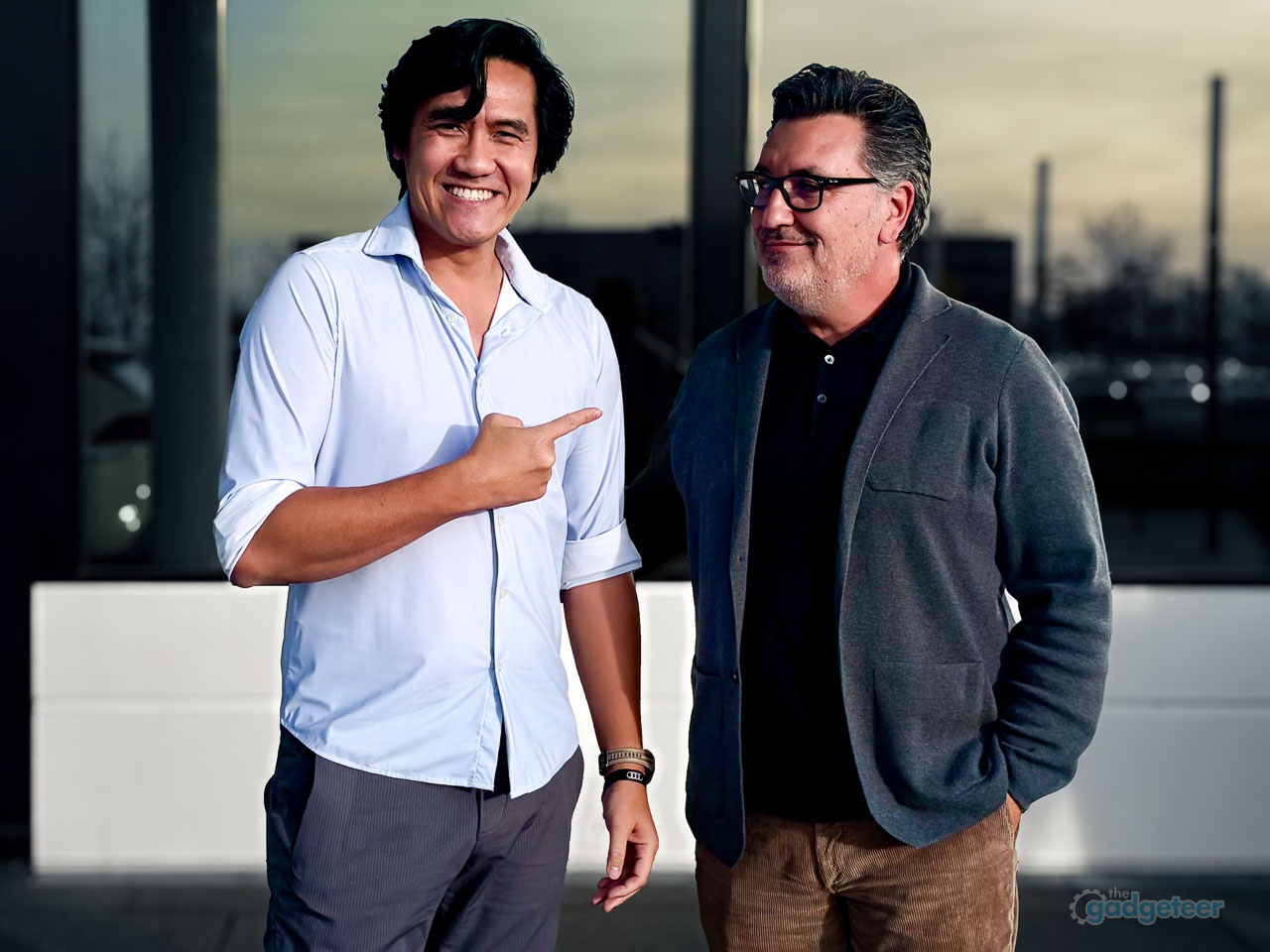
When I asked about his design inspiration, he talked about the original Audi TT and how it shaped his design philosophy. The TT came out when he was finishing his transportation design studies and starting his first job at Carrozzeria Bertone. “The TT when it came was so different and it really opened my mind,” he explained. “It really changed the way I saw car design as I was entering that world as a professional.”
He describes the TT as having “an incredibly rational design. I always say the TT cannot be designed in any other way. If you look at the car, you can start and say, would I do this different? And in your mind you go through like, yeah, maybe this. And then you always end up, no. What’s on the car is the right.”
The Four Principles: Clear, Technical, Intelligent, Emotional
Massimo explained Audi’s new design philosophy called “The Radical Next,” built on four principles:
- Clear: Eliminating visual noise through minimalist surfaces with precise geometric cuts that follow structural lines.
- Technical: Every surface communicates its engineering purpose through exposed materials and functional elements.
- Intelligent: Systematic application where geometric cuts map to structural stress points, airflow paths, and load paths. “Function dictates form, but beauty emerges from the constraint.”
- Emotional: Selective use of color (like the Audi red) to create visual punctuation and emotional impact.
He emphasized that all four principles must be present. “You can possibly dial some of them more than others, but they all have to be there.” With Formula 1, the emotional side is dialed up because “that’s the most visceral aspect.”
Sustainability and Technology
When I asked about sustainability, Massimo had a refreshingly pragmatic take: “Today you almost don’t even have to talk about sustainability. It has to be embedded in everything you do.” Sustainability goes beyond just materials to include methods of making, circularity, and the entire production process.
On technology integration, he stressed using technology “to a benefit” rather than “just for the sake of it.” The risk is displaying technology without delivering meaningful user experience. “There’s no benefit, so the idea is to use technology to a beneficial use and experience.”
Design Inspirations
When I asked about objects that inspire him beyond cars, he mentioned watches as something he’d love to design someday. For physical representation of his design values, he cited the pyramids: “The pyramids, for me, they have an absolute perfect geometric form. They have an incredible character, they have an incredible presence. And they really stood the test of time. So there is a quality to those buildings that really covers everything that I think in design you should have.”
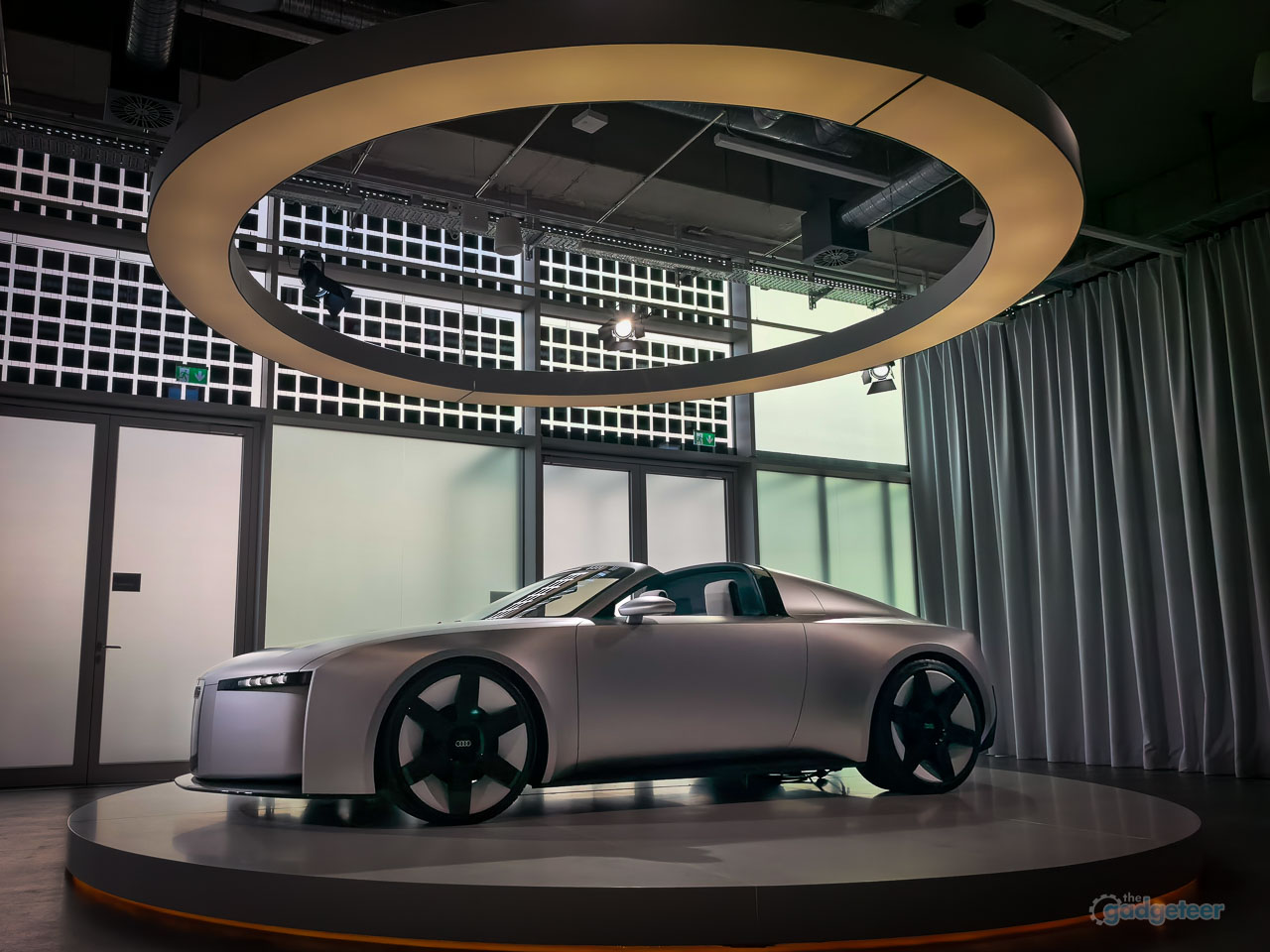
For creative inspiration, he finds New York particularly compelling: “I find a mix of heritage and modern. There’s a logic to New York. There’s a grid. You can find a place, even if it’s the first time that you are visiting New York, just by crossing the street.”
What This Means for Gadget Enthusiasts
Audi’s F1 entry represents a convergence of automotive engineering, digital technology, and design philosophy that should resonate with tech enthusiasts:

- Design-Led Technology: Audi restructured to place design at the core, reporting directly to the CEO. This makes design decisions drive technology integration, not the other way around.
- Material Innovation: The exposed carbon fiber, precision-machined aluminum elements, and advanced metallic finishes represent manufacturing technology at the highest level.
- Haptic Feedback: The emphasis on physical controls with precise tactile feedback runs counter to the all-touchscreen trend. Audi’s “click” feedback proves that analog interfaces still matter in digital environments.
- Active Aerodynamics: The 2026 regulations allow adjustable front and rear wings. The R26’s design maintains visual consistency in multiple configurations, solving a challenge most designers ignore.
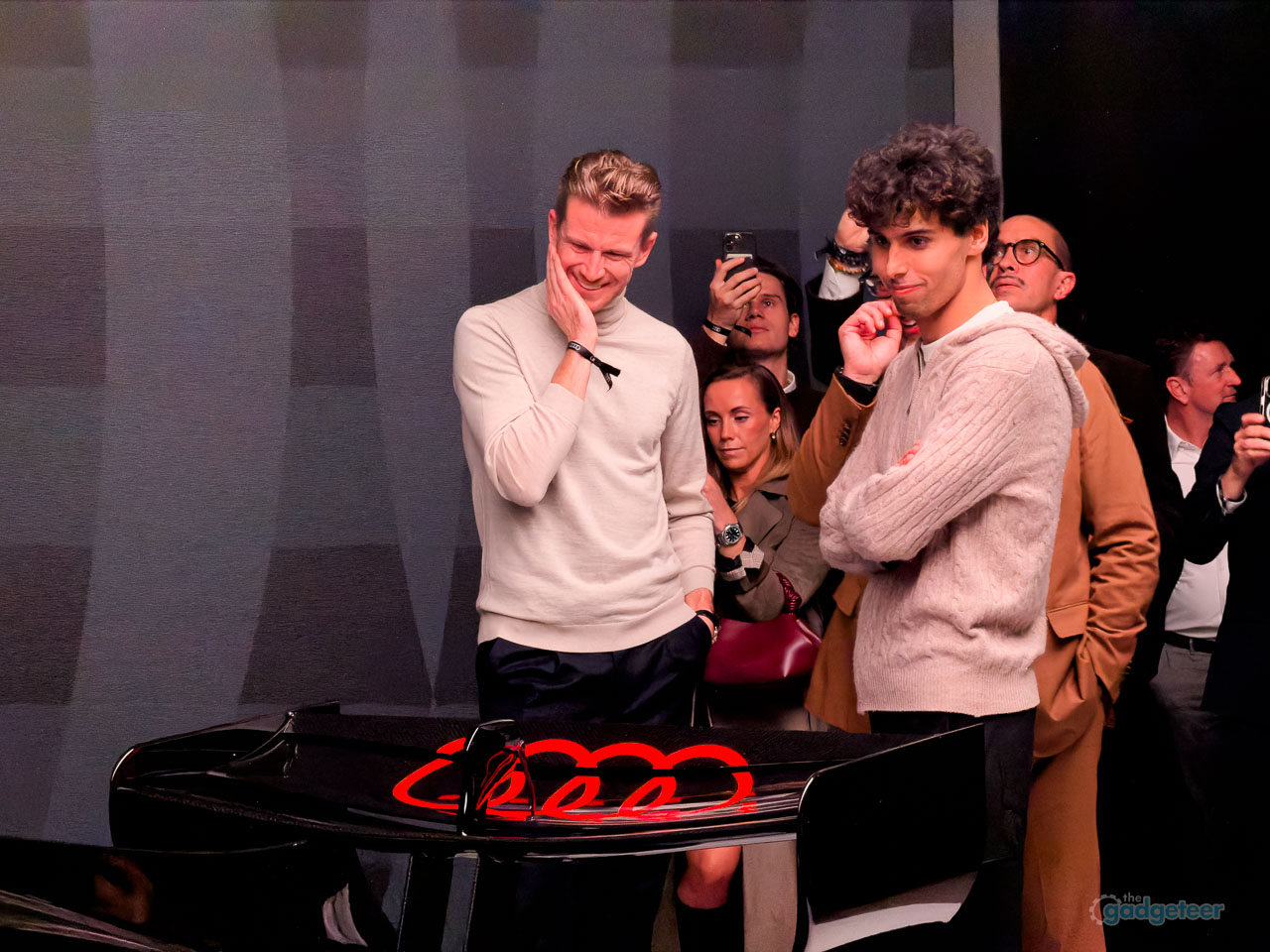
- Electric Architecture Freedom: The 50% electric powertrain creates packaging flexibility that enables design choices impossible with traditional engines. The Concept C’s dramatic proportions result directly from central-battery placement.
The Countdown Begins
115 days until the R26 races in Melbourne. 115 days until we see if Audi’s minimalist design philosophy can compete in F1’s most complex, most visible, most competitive arena.
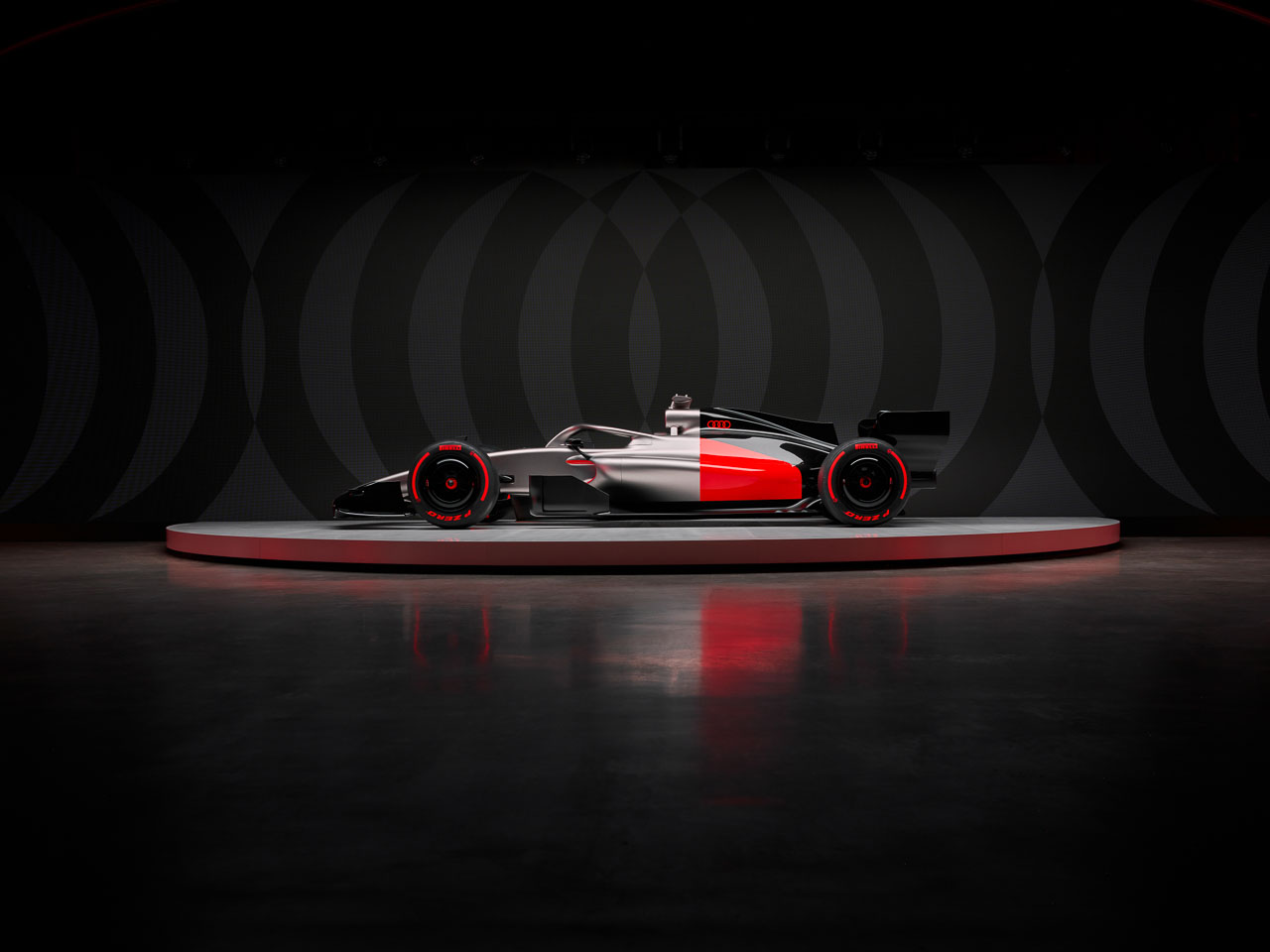
The facility tour, the R26 reveal, hands-on time with the Concept C, and the conversation with Massimo Frascella all pointed to the same conclusion: Audi isn’t just entering F1 to participate. They’re entering to rewrite the visual rules of motorsport while pushing technological boundaries that will eventually trickle down to production vehicles.
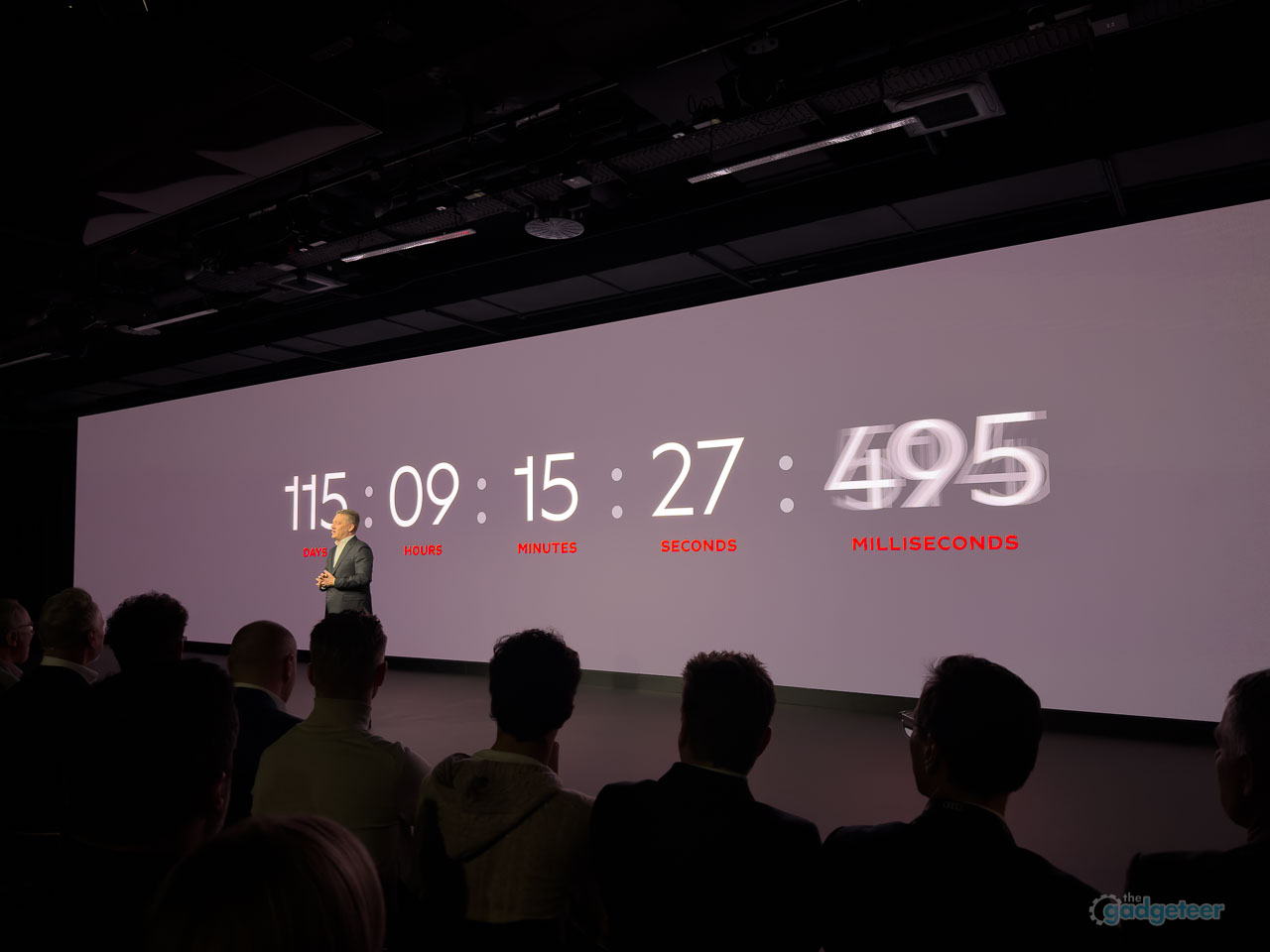
And yes, those Recaro chairs in Mission Control really are as comfortable as I said.

